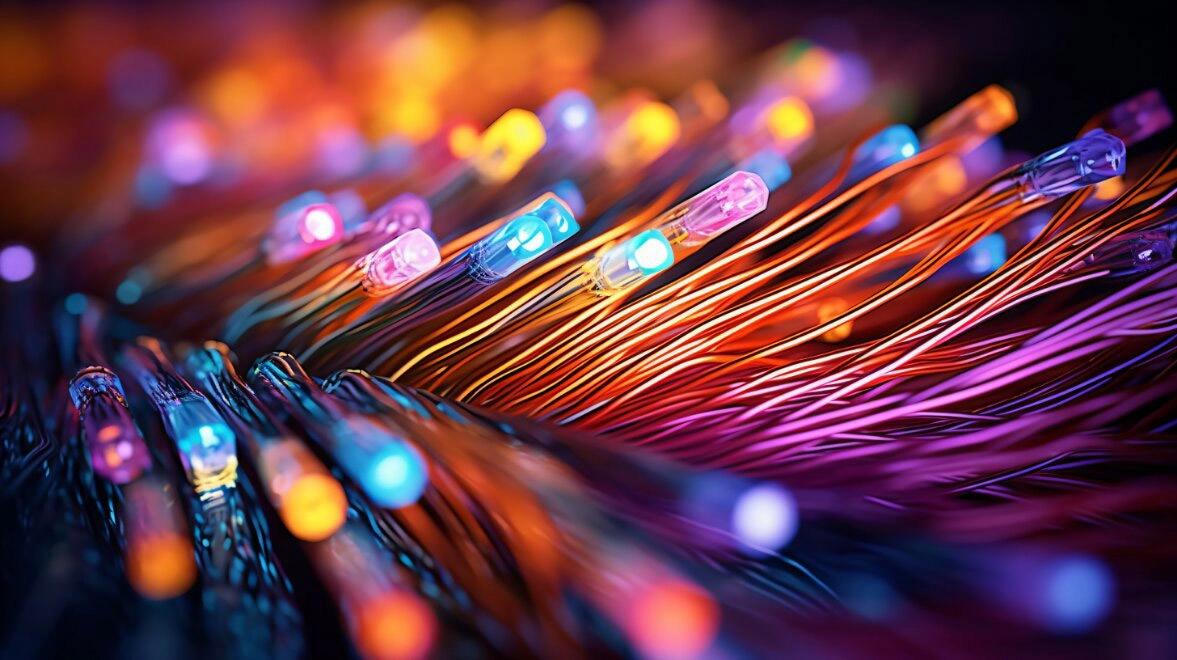
Blog
blog Location: Home > Blog > Technical Article
Location: Home > Blog > Technical Article
 Update Time:2025-08-16
Update Time:2025-08-16 Traffic:
Traffic: Optical fiber materials play a crucial role in modern technology, yet often remain in the shadows. This article delves into the secrets of these magical materials, exploring their composition, manufacturing process, advantages, and wide - ranging applications in various fields. It also looks at the future prospects of optical fiber materials, revealing their significance as the unsung heroes of the technological world.

Table of Contents:
- Introduction
The composition of optical fiber materials
The manufacturing process of optical fiber materials
The advantages of fiber optic materials
Application of optical fiber materials
The future of optical fiber materials
- Conclusion

In the modern era of rapid - developing technology, optical fiber has become an indispensable part of our lives. However, the optical fiber material, the hero behind this technological wonder, is often overlooked. It is time to unveil the secrets of this magical material and understand its crucial role in the technological world.
Optical fiber materials are mainly composed of silica. Pure silica has excellent optical properties, such as low loss and high transparency in the optical communication wavelength range. In addition to silica, other dopants may be added to adjust the refractive index and other properties of the optical fiber. For example, germanium dioxide is often used as a dopant to increase the refractive index of the core of the optical fiber, which helps to guide the light signal effectively within the fiber.
The manufacturing process of optical fiber materials is a complex and precise one. It generally includes the preparation of pre - forms and the drawing of optical fibers. First, high - purity raw materials are used to make pre - forms through processes such as chemical vapor deposition. These pre - forms have a similar structure to the final optical fiber but are much larger in size. Then, the pre - forms are heated to a high temperature and drawn into thin optical fibers. During this process, strict control of temperature, tension, and other parameters is required to ensure the quality and performance of the optical fibers.
Optical fiber materials have several significant advantages. Firstly, they have extremely low signal loss. Compared with traditional copper - based communication cables, optical fibers can transmit signals over much longer distances without significant attenuation. This makes optical fiber an ideal choice for long - distance communication networks. Secondly, they have a high transmission capacity. Optical fibers can carry a large number of data channels simultaneously, enabling high - speed data transmission. In addition, optical fiber materials are immune to electromagnetic interference, providing stable and reliable communication quality. They are also lightweight and flexible, making them easy to install and lay.
Optical fiber materials have a wide range of applications. In the field of communication, they are the backbone of modern telecommunication networks, including the Internet, mobile communication, and long - distance voice and data transmission. In the medical field, optical fibers are used in endoscopes, allowing doctors to observe the internal situation of the human body without invasive surgery. In the industrial field, optical fibers are used for sensing and monitoring, such as detecting temperature, pressure, and strain in industrial equipment. They are also used in the field of lighting, providing new solutions for energy - efficient and high - quality lighting systems.
The future of optical fiber materials looks promising. With the continuous development of technology, such as the rise of 5G and the Internet of Things, the demand for high - speed and large - capacity communication will continue to increase. Optical fiber materials will play an even more important role in meeting these demands. In addition, research and development in new types of optical fiber materials are also ongoing, aiming to further improve their performance and expand their applications. For example, the development of photonic crystal fibers with unique optical properties may open up new possibilities in areas such as super - fast data processing and high - precision sensing.
Optical fiber materials, as the unsung heroes behind the technological light, have made great contributions to modern technology. Their unique composition, manufacturing process, advantages, and wide - ranging applications have made them an essential part of our technological society. As we look to the future, the potential of optical fiber materials will continue to be explored, and they will surely play an even more significant role in shaping the technological landscape.
